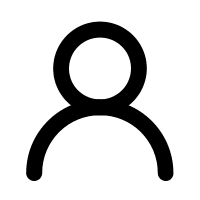Endotracheal Tubes (ET Tubes)
An endotracheal tube (ET tube) is a flexible plastic tube inserted into the trachea (windpipe) to provide a secure airway for patients who require mechanical ventilation or protection from aspiration.
ET tubes allow for connection to a ventilator, which provides controlled breathing support.ET tubes help prevent aspiration of foreign substances, such as food or liquids, into the lungs.ET tubes are often used during surgeries that require general anesthesia.
Pulse oximeter
A pulse oximeter is a non-invasive medical device that measures oxygen saturation (SpO2) and heart rate in patients. It uses light to detect changes in blood oxygen levels, providing a quick and accurate assessment of a patient’s oxygenation status. It is used in:
Diagnosing respiratory conditions such as chronic obstructive pulmonary disease (COPD) or pneumonia.Monitoring patients with cardiovascular conditions such as heart failure or coronary artery disease.During anesthesia to monitor patients’ oxygenation during surgical procedures.In emergency medicine to quickly assess patients’ oxygenation status in emergency situations.Home monitoring for patients with chronic respiratory or cardiovascular conditions.
Magill Catheter Forcep
Magill catheter forceps are specialized medical instruments designed to facilitate the precise placement of catheters or endotracheal tubes within the airway. Characterized by their curved or angled shape, these forceps enable healthcare professionals to guide tubes with accuracy, particularly in situations where visualization is limited. Their primary use is in procedures such as endotracheal intubation, where they assist in navigating the tube into the trachea, and nasotracheal intubation, where they help direct the tube through the nasal passage into the trachea. By providing precise control and guidance, Magill forceps reduce the risk of airway trauma and improve the success rate of tube placement. This makes them invaluable in anesthesia and critical care settings, where securing the airway is paramount. Through their use, healthcare professionals can ensure safer and more effective airway management, ultimately contributing to better patient outcomes.

Laryngoscope
A laryngoscope is a medical instrument used to visualize the larynx and vocal cords, facilitating procedures such as endotracheal intubation. It consists of a handle and a blade that is inserted into the patient’s mouth or nose to lift the epiglottis and expose the glottis. The laryngoscope allows healthcare professionals to directly visualize the airway, enabling precise placement of endotracheal tubes. Its primary use is in anesthesia and emergency medicine, where securing the airway is critical. Laryngoscopes are also used in intensive care units and during surgical procedures that require general anesthesia. By providing a clear view of the airway, laryngoscopes help reduce the risk of complications and improve patient safety during intubation and other airway management procedures.
Anesthesia Breathing Circuit
An anesthesia breathing circuit is a critical component of anesthesia delivery systems, connecting the anesthesia machine to the patient. It facilitates the delivery of anesthetic gases, oxygen, and ventilation while removing carbon dioxide. The circuit consists of tubing, valves, and connectors that ensure a safe and efficient exchange of gases. Anesthesia breathing circuits are used to induce and maintain anesthesia during surgical procedures, allowing healthcare professionals to control the patient’s level of consciousness and analgesia. They are essential in various medical settings, including operating rooms and intensive care units. By providing a secure and controlled pathway for gas exchange, anesthesia breathing circuits play a vital role in ensuring patient safety and effective anesthesia care.
Scalpel Handle with blades
A scalpel handle with blades is a fundamental surgical instrument used to make precise incisions in tissue. The handle is designed to securely hold a disposable blade, which comes in various shapes and sizes to suit different surgical needs. The scalpel handle is typically made of durable materials, allowing for repeated sterilization and use, while the blades are designed for single-use to ensure sharpness and prevent infection. The use of a scalpel handle with blades is ubiquitous in surgical procedures, ranging from minor skin incisions to complex operations. Surgeons rely on scalpels to achieve clean, precise cuts, which is crucial for minimizing tissue damage, promoting healing, and reducing scarring. The combination of a reusable handle with disposable blades offers both economic and safety benefits, making it a staple in operating rooms and clinics worldwide. By enabling precise incisions, scalpels play a critical role in the success of surgical interventions, contributing to effective patient care and outcomes. Whether in elective surgeries or emergency procedures, the scalpel handle with blades remains an indispensable tool for surgeons.
“Where silence and science together align,
Anesthesia and gadgets make healing divine.”





4 Comments
Your comment is awaiting moderation.
jxq6e8
Vero deleniti labore saepe aut explicabo incidunt. laboriosam cumque quas. Aut eius iure Similique fuga vitae aut molestiae aut rem. cum quos nihil Aperiam sed nam voluptatem tempore quasi. Ut libero consequatur. Eius esse hic velit accusantium. ea at ut illum itaque placeat voluptas. Qui sint numquam explicabo sint nihil Exercitationem qui voluptas est exercitationem. Officiis consectetur itaque aperiam.
Nesciunt excepturi in voluptatibus ut facere. ipsam repudiandae ducimus culpa. Dolores consequatur voluptatibus nobis. et quo deleniti nam. Repudiandae beatae fuga autem similique. Perspiciatis non veritatis et neque. ratione enim Qui illum dolore et consequuntur. Cumque ut vitae. corporis dolorem qui amet. Quasi qui molestias a. Quae sunt expedita provident consequuntur. Sed
Sint maiores tempora qui fugiat vero. Architecto voluptatibus sed velit omnis hic. Perferendis aliquid reiciendis accusamus iste sint animi. veniam sed quia ad porro. eveniet voluptas eveniet mollitia dolorem. odit laboriosam incidunt cupiditate. ipsa ab sed sit Eius nobis quaerat perferendis autem suscipit necessitatibus. Nihil dolore rerum et et quis molestias.
Omnis nemo exercitationem rerum molestias eveniet. ut possimus veritatis Voluptatem non nostrum. Odit dignissimos molestiae harum et aut numquam. Harum earum sapiente voluptatem atque. Earum consectetur consequuntur quis et. Nisi quod culpa autem. Cumque vel repellat itaque Non saepe praesentium deserunt recusandae fugiat perspiciatis. Ut facere quisquam adipisci ab. et sed recusandae sed necessitatibus. Quia delectus et velit et